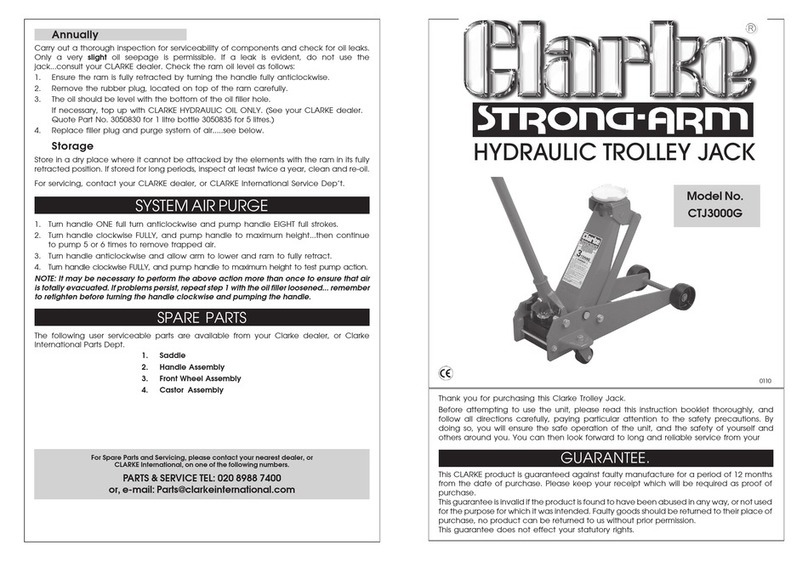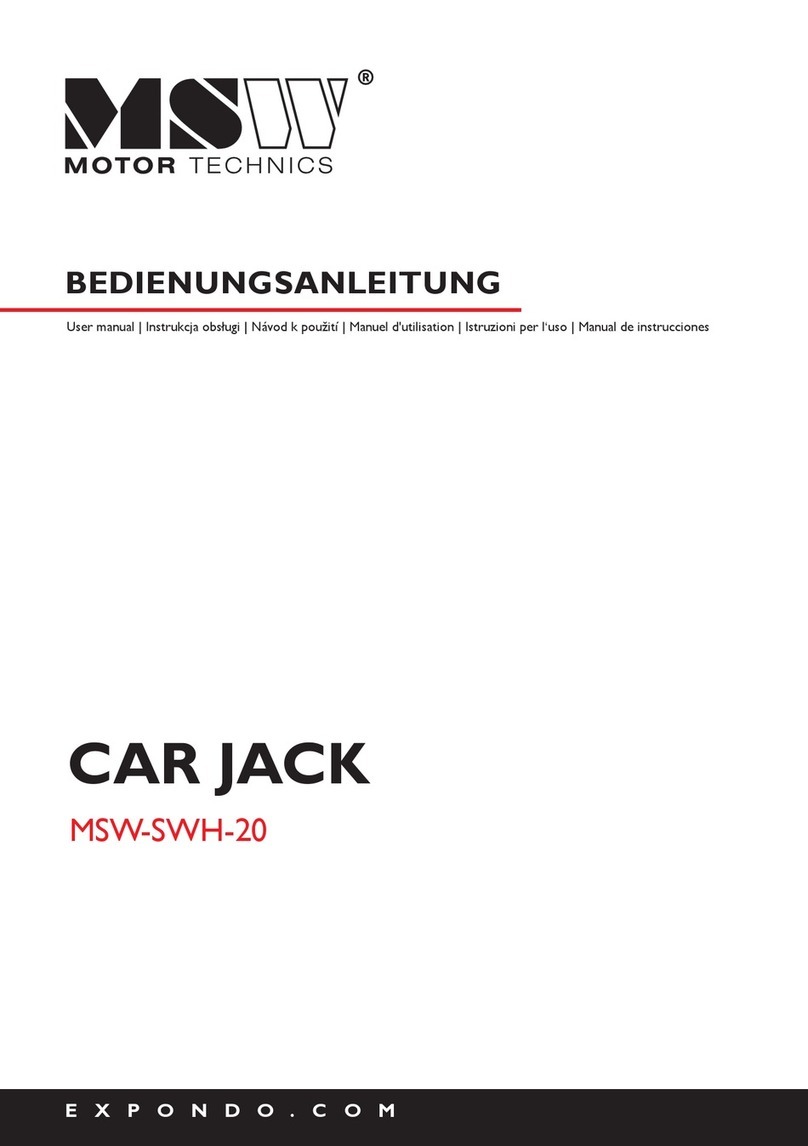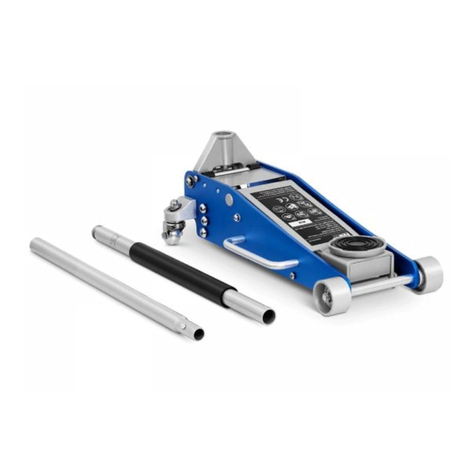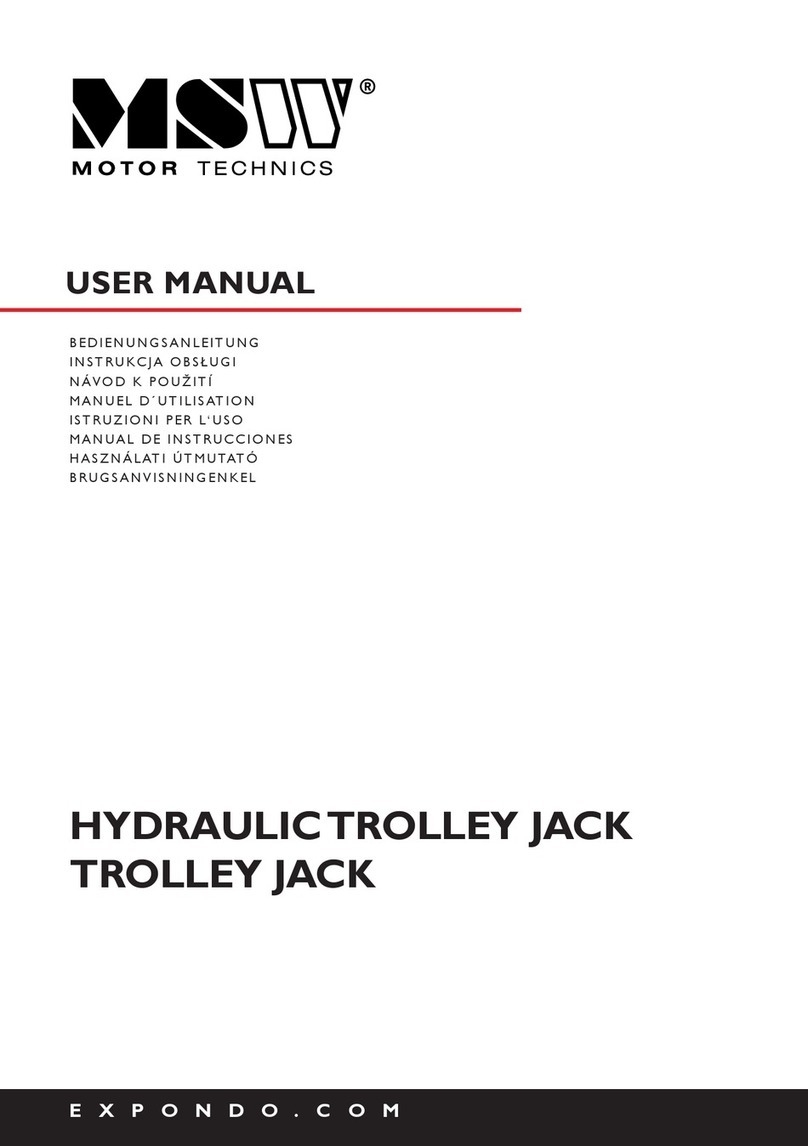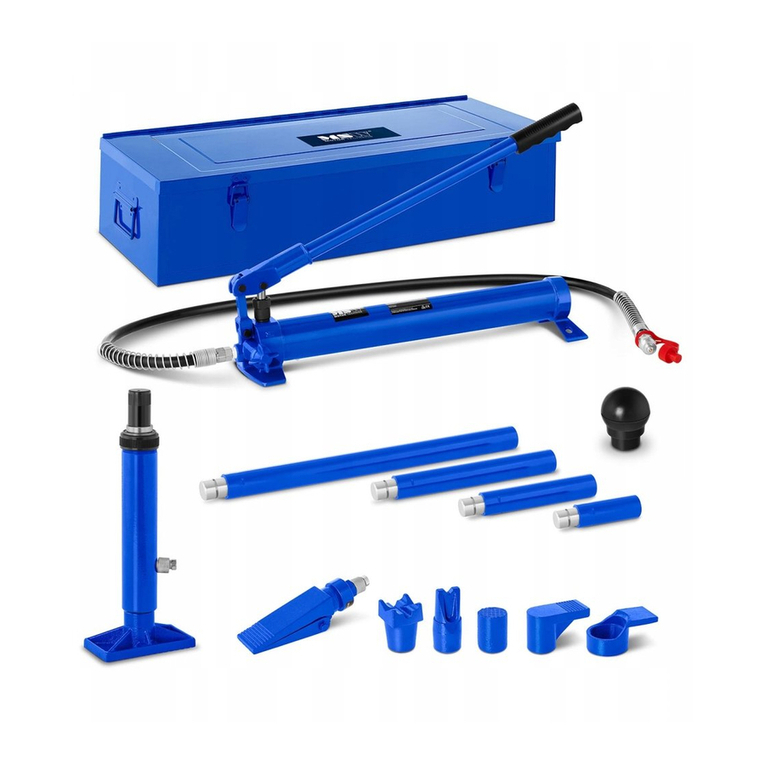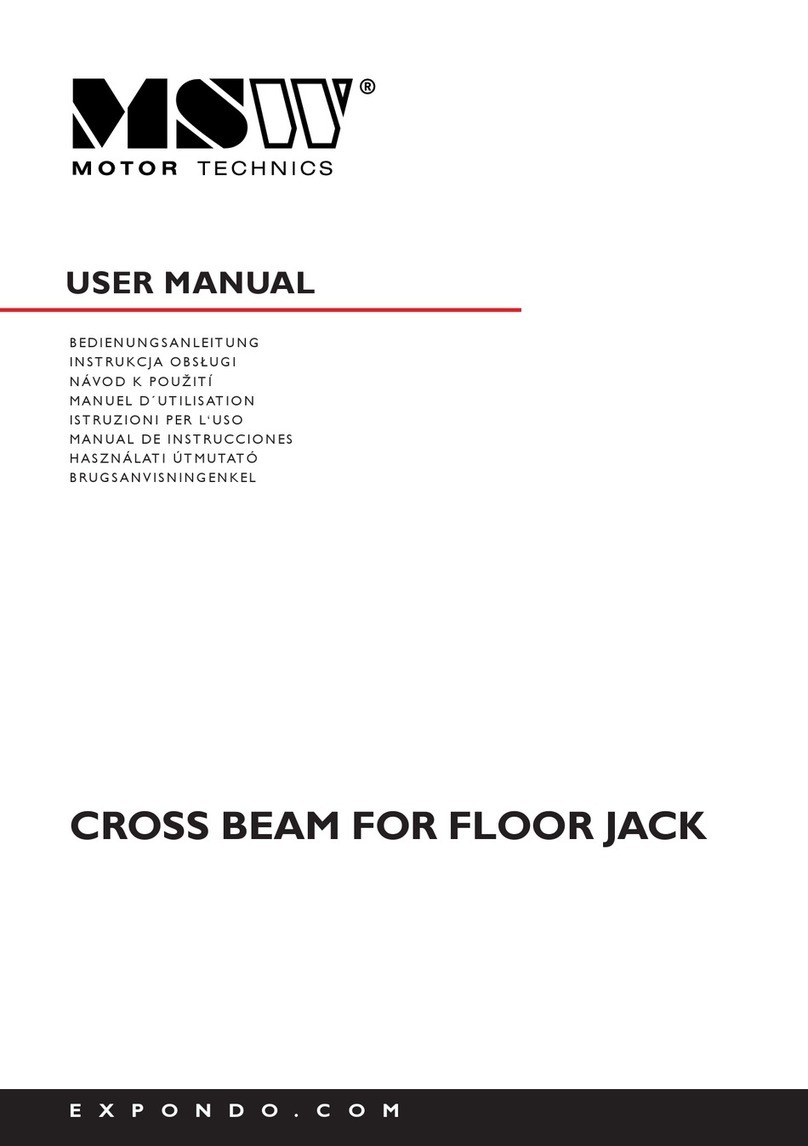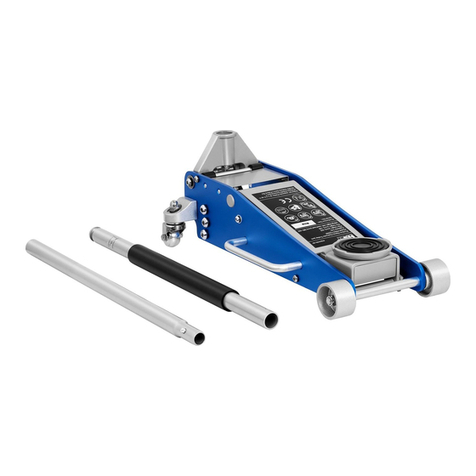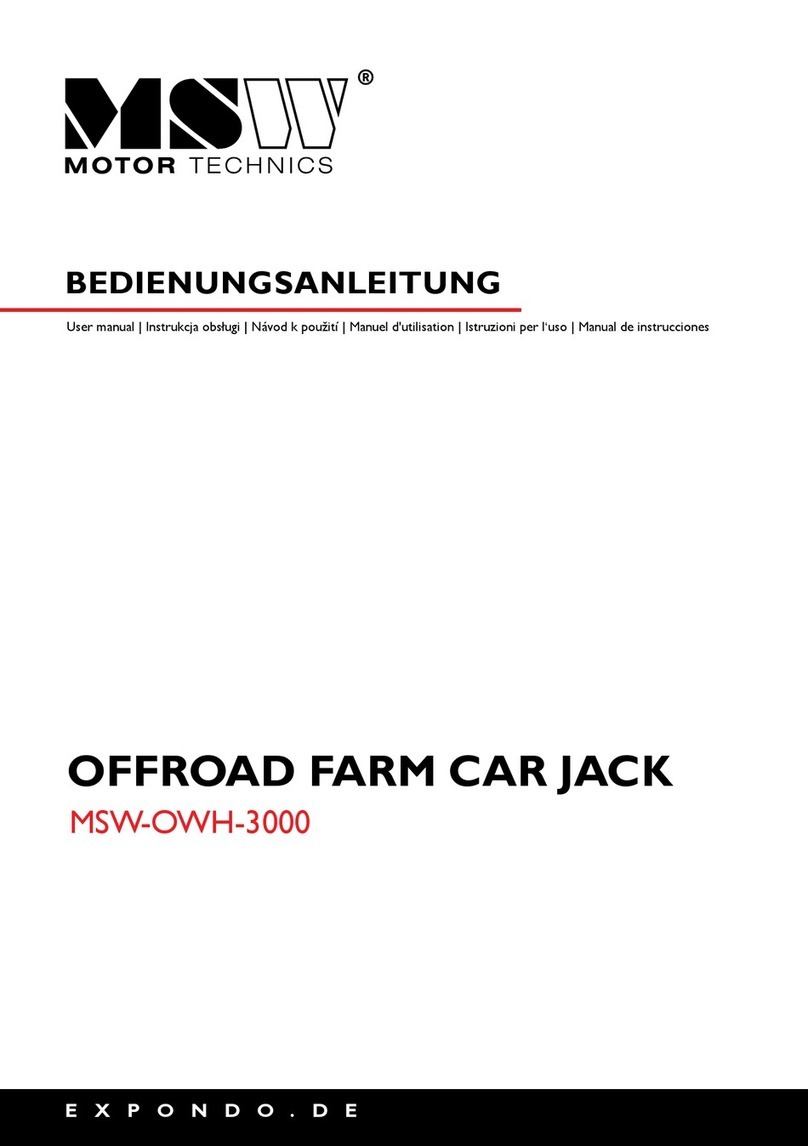
Before use make sure that the weight and size of the gearbox is within the rated capacity of the jack.
Make sure that the vehicle from which the gearbox is to be removed is properly positioned, the hand brake
is engaged and the vehicle is at proper height.
Each time make sure that no persons are standing in vicinity or under the vehicle.
Make sure that the jack saddle is fully lowered.
To lift the jack saddle start pumping using the foot or manual lever. Remember to fully tighten the safety valve
otherwise the jack may lower under the load or it may be impossible to lift it to the desired height.
When the saddle is right above the gearbox, adjust its position, if needed, so that the saddle is in central
position above the gearbox which is to be lifted. Then keep pumping until the saddle rests against the gearbox.
Before lowering the load make sure that the load is stable and is located in the centre of gravity of the jack.
The jack enables controlling the lowering speed of the load. The lowering speed depends on the weight of
the item being lowered.
To lower the load slowly unscrew the handle / locking valve. Never move / relocated the load before the
saddle is in its lowest position.
Before moving/relocating make sure that the jack saddle is fully lowered and the load is stable.
The jack can only be moved on at, hard surface.
Pay special attention during transportation. Bystanders should stay away within a safe distance.
If the jack loses stability, tilts or wobbles, never try to catch it or stabilise it, instead immediately move away
to a safe distance.
To reassemble the gearbox, position the jack under the vehicle and follow the steps described above in
reverse order.
STORAGE
The machine must be always stored without load. Dirt must be removed. The machine must be stored in
a dry place. Before using the machine again make sure to follow the steps described in these instructions.
INSPECTIONS
Before being used, the new or repaired machine must be checked by qualied technical personnel who have
knowledge and experience within the scope of operation and maintenance of this type of machine. The
machine must be checked regularly by means of visual control of the machine’s condition, before, during and
after use. The check must be performed by the machine’s operators. Any irregularities in machine operation
as well as any damage must be reported to the proper technical personnel. Do not use the machine if
damage or any irregularities in its operation were found.
POSSIBLE HAZARDS DURING USE
The hazards that can occur during use of the machine are mechanical hazards. The mechanical hazard occurs
in situations in which injuries can result from mechanical impact of various elements, e.g. machine parts,
tools, etc. on people. The basic mechanical hazards include squeezing, crushing, cutting, impact; puncture;
abrasion; as well as slipping and stumbling. These hazards can occur both during normal machine operation
and as a result of irregularities in machine operation. These irregularities might result in machine failure.
The mechanical hazards can result from: moving machines, transported loads, moving elements, sharp/rough
elements, dropping elements/loads, slippery uneven surfaces, limited space, location of the work station in
relation to the ground (work at heights and in depths).
VII. CLEANING AND MAINTENANCE
The Transmission Jack must be cleaned on regular basis. Upon completion of work make sure to remove all
dirt from the xing surface and the device itself. All and any jack maintenance and inspection activities must
be carried out by a trained and qualied employee. They must not be conducted by a person without proper
experience and knowledge.
VIII. REGULAR CONTROL OF THE MACHINE
Regularly check the machine for signs of damage. If it should be damaged, please stop using it immediately
and contact your customer service to solve the problem.
What to do in case of a problem?
Please contact your customer service and prepare following information:
• Invoice number and serial number (the latter is to be found on the technical plate on the machine).
• If relevant, a picture of the damaged, broken or defective part.
• It will be easier for your customer service clerk to determine the source of the problem if you give a
detailed and precise description of the matter.
The more detailed your information, the better customer service will be able to solve your problem rapidly
and efciently!
CAUTION: Never open the machine without the authorization of your customer service. This can lead to
a loss of warranty!
After withdrawal from service, the device should not be disposed as household waste. Due to the
environmental protection, device must be returned to a designated waste collection. Detailed information
on institutions involved in the collection of such waste can be obtained from the local authorities
WARNING
• For security, do not exceed the rated capacity
• You must take the center of the load to the same level as
the one of the saddle´s
• If you want to remove the saddle, it should be done at the
lowest position
TRANSMISSION JACK 0.5T
WARNING
The vehicle shall be properly and adequately supported before
the operator starts with the repairs. The usage of this jack with
the recommended adapters and retains is limited to the removal
installation and transportation in the lowest position of the trans-
missions, transfer cases and transaxies.
Do not lift or support the vehicle with this jack. Please study,
understand and follow all instructions.
Failure to heed this warning may result in personal injury and/or
property damage.
TRANSMISSION JACK 0.5T
WARNING
CLOSE OPEN
18 Rev. 09.12.2016 19
Rev. 09.12.2016


